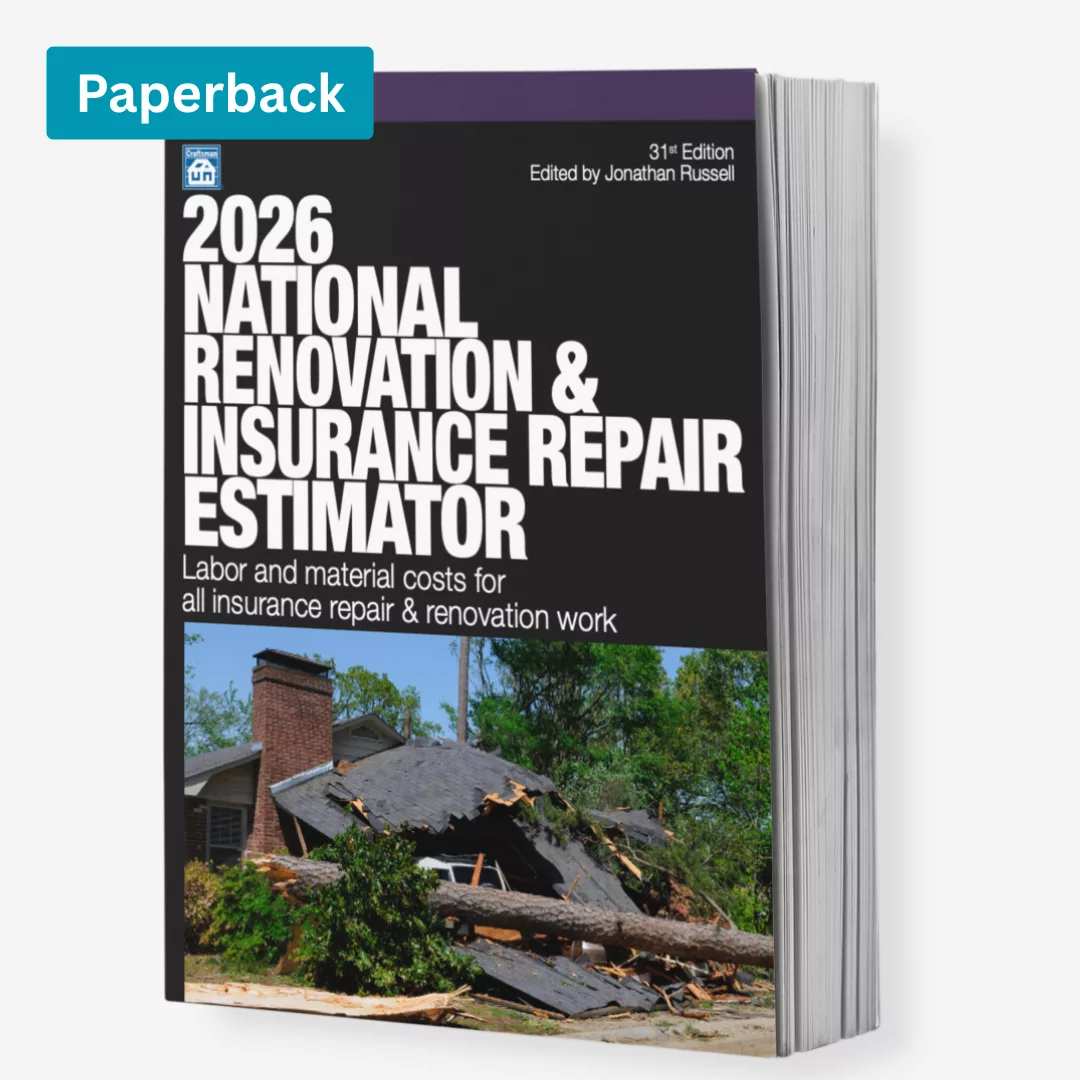Tips for Restoration Contractors on Getting Free Liability Insurance

Photo credit: Pattanaphong Khuankaew/ iStock / Getty Images Plus via Getty Images
In a world where nothing is free, how can it possibly be that there is such a thing as “free insurance” to cover the liability of others that you assume under contracts? That coverage exists and it is called contractual liability coverage.
To be more accurate the insurance is not exactly free, the cost of the contractual liability coverage was paid for by the purchaser of the general liability policy and most contractors pollution liability insurance policies. The insurance coverage is free for the asking if it is asked for in the right way and all of the requirements to be covered as an additional insured on another party’s liability insurance policy are met. The coverage is also free if someone wants you to cover them as an additional insured on your business liability insurance policies. But everything needs to be in order to get free insurance to function.
Below I will provide some tips on how to get free insurance from the vendors that work for you. I also have some tips on how you can avoid becoming an insurance company of last resort when your insurance does not work as hoped for to cover your contractual liabilities when someone wants you to provide them with some free insurance.
Contractual liability insurance is needed to insure you for the liability of others that you assume when there is an indemnity agreement in a contract you enter into. All direct repair network and franchise agreements contain an indemnity agreement for example. If you see a request by a client to be an additional insured on your liability insurance policies, you can rest assured there is an indemnity agreement lurking in the contract somewhere.
By simply requiring to be an additional insured on your liability insurance policies, your customers, a direct repair network or a franchisor gains the protection of your insurance coverage before any insurance purchased by them would need to respond to a claim arising from something you did that also involved those parties as defendants. The cost of contractual liability coverage was included in the liability insurance premiums you paid. For the parties that enjoy protection as an additional insured under on your general liability and contractors pollution liability insurance policies, it is free insurance to them.
You can also access free insurance for you when you hire subcontractors. If you have a good subcontractor agreement that requires the subcontractor indemnify you for claims made against you arising from something the subcontractor did to cause damages to property or people, and that you need to be an additional insured on the subcontractor’s policy, that will be free liability insurance to you. The subcontractor has already paid the premium for contractual liability in the business liability policies they purchased. But if you do not ask to be indemnified and be an additional insured on the subcontractor’s general liability and contractors pollution liability policies, you will forego the free insurance coverage available for you as the party hiring the subcontractor. All you need to do is to get a solid subcontractor agreement into place with accurate indemnity and insurance requirements to enjoy the benefits of free insurance for you.
There are some little-known tricks of the trade to perfect the cost-free coverage for an additional insured. First, without a contract or agreement that has both an indemnity obligation and a request to be an additional insured in it, the automatic liability coverage for the additional insureds normally found in the liability insurance sold to contractors will not be effective. Second, particular attention needs to be paid to how the additional insured protections actually apply. Not all insurance policies are created equal when it comes to contractual liability.
In practice most off-the-shelf general liability insurance policies sold to insure a contractor will include contractual liability coverage in it. Those policies can be amended to provide coverage for parties seeking to be an additional insureds on a primary basis. That is usually accomplished through the use of an automatic or blanket additional insured endorsement. Those automatic additional insured endorsements function pretty well anytime the contractor is performing operations for the party seeking to be an additional insured when those operations are performed at the location or jobsite of the additional insured.
Automatic additional insured endorsements usually provide good coverage when a general contractor is hiring a subcontractor. But they do not work very well any time a contractor is not performing operations for and at the location of the party seeking to be an additional insured. Virtually all “automatic” or “blanket” additional insured endorsements require those two conditions to actually qualify as an additional insured under the policy.
So how does it work when a party you work with wants to take advantage of the free insurance in your liability insurance policies by being an additional insured under your insurance and the coverage for that additional insured status is defective? Direct repair networks are a great case example of this scenario. Nine out of ten restorers working for direct repair networks are sold liability insurance policies that have really sketchy additional insured coverage for the network.
Here is how that comes to pass. First, to get the additional insured coverage in your business liability policies to work at all, you need to agree to indemnify that party in a contract or agreement. Direct repair networks have very strong indemnity obligations putting the contractor on the hook for any potential liability arising from the contractor’s work that may ensnare the network, that part on the path to free insurance always works. Second, you need to agree to make the network an additional insured under your insurance policies. The direct repair networks all expect to be an additional insured in their contract with you. That part on the road to free insurance coverage works too.
Here is where things usually fall apart, if the additional insured coverage for the network is dependent upon you performing operations for them at their offices, those things did not happen on a project simply assigned to you by a network. Therefore, the network is technically not covered under your policies as an additional insured. But you are still obligated by the indemnity agreement in the network’s contract to pay for the lawyers that are defending the network and any judgements the network may be responsible for if you both lose the court case. In effect you will be uninsured and there is no reason for that to happen. The insurance coverage you need to cover the liability you assume in most direct repair network contracts is readily available from insurance brokers that specialize in insuring restoration contractors and has been for 20 years.
The best way to solve the problem is to get specific endorsements to your liability policies that show a specific network is an additional insured.
There are some simple fixes to the common coverage gaps for direct repair networks that expect to be covered as additional insureds on your liability insurance. The best way to solve the problem is to get specific endorsements to your liability policies that show a specific network is an additional insured. Alternatively, some but not all package general liability/contractors pollution liability/ professional liability policies have automatic additional insured coverage endorsements for jobs assigned by direct repair networks that are fully functional.
But I have never read an automatic additional insured endorsement on a standalone general liability policy that actually works to provide coverage as an additional insured for a direct repair network. You are not performing operations for the network when a network assigns you to a job, your contract to actually perform work is with the property owner and you are sure are not performing operations at the headquarters of the network. Therefore, the two conditions necessary to make a network an additional insured under your policies are not met. In those cases what is supposed to be free insurance for the network is now an uninsured liability on you. In effect if you do not get the cost free additional insured coverage strait on your liability insurance policies, you are personally going to become the insurer of the network through the indemnity agreement in your contract with them. That is something that obviously needs to be avoided. There are some simple steps take in order to do that.
First, from my experience gained from reading literally thousands of liability insurance policies sold to restorers, the package general liability/contractors pollution liability/professional liability policies specifically designed for use by restoration contractor are by far the best insurance coverage designs. A good quality package policy designed specifically for use by firms in the fire and water restoration business is going to have the coverage for networks as additional insureds figured out. About 30% of restores are insured under these customized policies today.
The other 70% of restorers are sold separate general liability policies and contractors pollution policies by usually well-intentioned insurance agents. I created the first CPL policy in 1986 working as an insurance consultant to the U.S. EPA to create insurance for the contractors working on superfund sites. CPL was not invented to insure restoration firms, in 1986 I did not even know what a restoration firm was. I know how to structure the interface between those two independent policies to avoid coverage gaps for things like additional insured’s or having no general liability coverage for burning down a house on a job involving the clean-up of a speck of mold or a drop of Category 3 water. The problem is no insurance company will agree to all of the necessary changes to make those separate policies operate without coverage gaps between the two. That is why I recommend the package liability insurance policies that have been customized for use by fire and water restoration firms.
Get more tips for managing risk in restoration work
It is a rocky road to gaining the benefits of free insurance and there are deep ditches on the sides of the road to run into for firms that do not perfect that free insurance coverage through the use of a good contract and due diligence to make sure the additional insured status of the party is actually functional. But since the contractual liability coverage is being paid for anyway it is worth taking advantage of it.
Looking for a reprint of this article?
From high-res PDFs to custom plaques, order your copy today!








